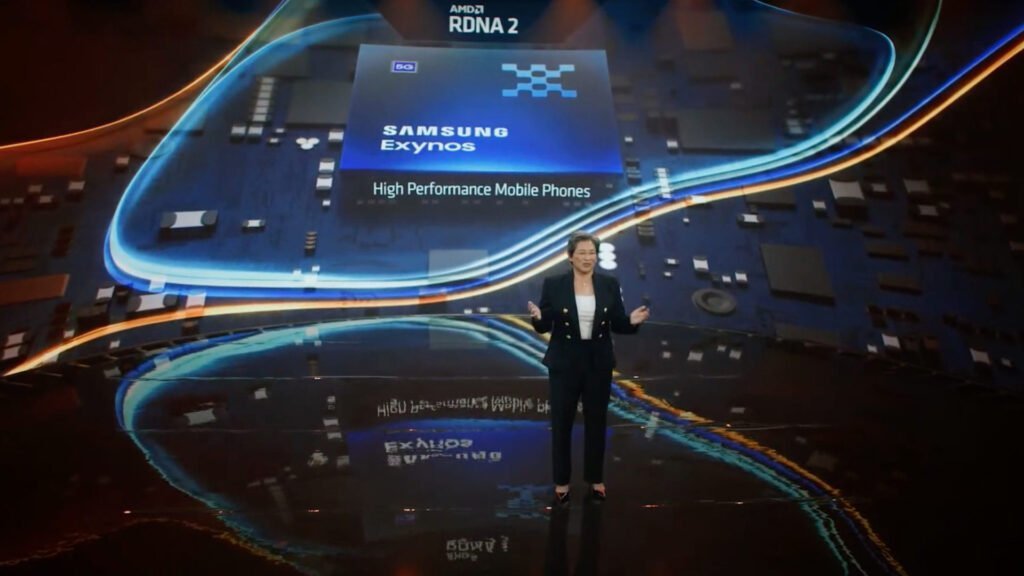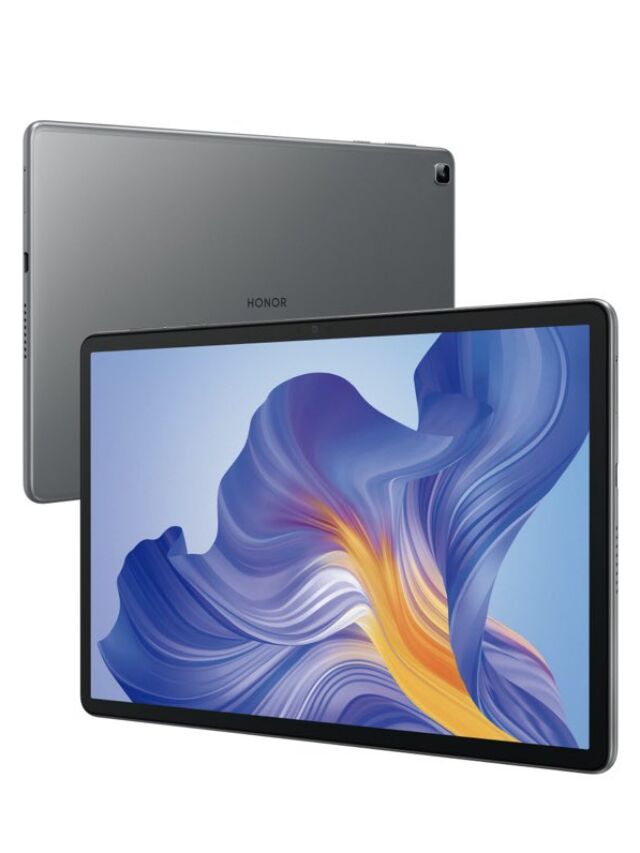In a strategic move to solidify its position in the global tech market, Samsung is seeking to elevate the gaming performance of its upcoming devices. To achieve this goal, Samsung has partnered with renowned tech giant AMD to develop a custom GPU for the next-generation flagship Exynos chipset.
This collaboration, officially announced at COMPUTEX 2021, marks a significant step forward in Samsung’s quest to deliver exceptional gaming experiences. AMD, renowned for its high-performance graphics solutions, will bring its expertise to the table, ensuring that Exynos-powered devices can handle even the most demanding gaming workloads with ease. Also Read: Qualcomm Snapdragon 782G launched as Snapdragon 778G+ replacement
Samsung and AMD Partnership
The partnership between Samsung and AMD is expected to yield groundbreaking results, pushing the boundaries of mobile gaming performance. With AMD’s cutting-edge GPU technology integrated into the Exynos chipset, users can anticipate seamless gameplay, stunning visuals, and unparalleled responsiveness.
This strategic alliance between two industry leaders signals Samsung’s commitment to innovation and its dedication to providing users with the best possible gaming experiences on its mobile devices. The next generation of Exynos chipsets, powered by AMD’s advanced GPU technology, is poised to redefine mobile gaming, setting new standards for performance and user satisfaction. Also Read: Qualcomm Gears Up for Flagship Chipset Launch: Snapdragon 898 or Snapdragon 8 Gen 1?

Samsung’s Next-Gen Exynos Chipset
Samsung is gearing up to unveil its next-generation Exynos chipset, poised to revolutionize the mobile gaming experience. While the exact details of the chipset remain under wraps, Samsung has confirmed that it will feature a custom GPU based on AMD’s cutting-edge RDNA 2 architecture.
This strategic partnership between Samsung and AMD marks a significant leap forward in mobile gaming performance. AMD’s RDNA 2 architecture, the foundation for the new Exynos GPU, is renowned for its ability to deliver console-quality graphics and immersive gameplay experiences. Also Read: 2024 Apple iPad is likely to launch with Samsung OLED display: Reports
The integration of AMD’s RDNA 2 architecture into the Exynos chipset is expected to empower mobile devices with unprecedented gaming capabilities. Users can anticipate seamless gameplay, stunning visuals, and unparalleled responsiveness, elevating mobile gaming to new heights. This next-generation Exynos chipset with AMD’s RDNA 2 architecture will be the next force behind Samsung’s flagship Galaxy S22 Series, set to launch in 2022.
With this powerful chipset at its core, the Galaxy S22 Series is also planning to redefine mobile gaming, offering users a truly groundbreaking gaming experience. Also Read: AMD Ryzen Pro 6000 series laptop processors announced for business users
Samsung Collaborates with AMD for GPUs
Lisa Su, CEO of AMD, expressed AMD’s enthusiasm for this collaboration. The CEO states that the company is planning to bring its custom graphics IP to Samsung’s next flagship mobile SoC. This powerful GPU will not only elevate custom gaming performance but also introduce advanced features. These features include ray tracing and variable-rate shading. Thus, further enhancing the visual fidelity and responsiveness of mobile gaming.
The integration of AMD’s RDNA 2 architecture into the next-generation Exynos chipset is likely to power the upcoming Samsung Galaxy S22 Series. The next smartphone models are likely to be released in 2022. With this groundbreaking chipset at its core, the Galaxy S22 Series could set a new standard for mobile gaming. Thus, offering users an unparalleled level of performance, graphics, and immersion. Also Read: Realme 8 with 4GB RAM/64 GB storage model launches in India
While the exact details of the next-generation Exynos chipset remain under wraps. Samsung already reveals that it will launch later this year. The anticipation for this groundbreaking chipset is palpable, as it promises to usher in a new era of mobile gaming. Thus, blurring the lines between console and mobile gaming experiences. Also Read: Vivo X50 Pro+ could arrive in India soon, possibly alongside X60 series
Samsung and AMD GPU Collaboration: Mobile Gaming with Ray Tracing and Variable Rate Shading
Samsung’s partnership with AMD to develop a custom GPU based on AMD’s RDNA 2 architecture could revolutionize mobile gaming. Thus, bringing previously unavailable features like ray tracing and variable rate shading to mobile devices. This groundbreaking collaboration is likely to elevate the performance of Exynos-powered handsets. Thus, challenging the dominance of Qualcomm Snapdragon and Adreno chips.
The integration of AMD’s RDNA 2 architecture into the Exynos chipset is likely to deliver console-quality graphics and immersive gaming experiences on mobile devices. Ray tracing is a technology that simulates the physical behavior of light to create realistic lighting and shadows. It will enhance the visual fidelity of mobile games. Also Read: AMD Radeon RX 6600 XT graphics card launched under mid-range price segment
Furthermore, variable rate shading will optimize graphics rendering for improved performance and battery efficiency. Rumors suggest that the upcoming Exynos 2200 SoC with AMD RDNA 2 architecture is likely to launch next year. The chipset could launch for both smartphones and laptops. This chipset has the potential to redefine mobile gaming. It can establish Exynos as a major player in the graphics processing landscape.
Exynos chips to improve its bad reputation
Samsung has been actively pursuing mobile gaming supremacy in recent years, touting the superior gaming experience offered by Exynos-powered devices. However, Qualcomm Snapdragon-powered devices have consistently outperformed their Exynos counterparts. Thus, leaving Exynos at a disadvantage in the competitive mobile gaming landscape. Also Read: Computex 2021: Intel, AMD, Nvidia, ARM and much more
There is a lack of adoption of advanced graphics features like ray tracing and variable rate shading in mobile games. This has further hampered Exynos’s ability to showcase its capabilities. However, the upcoming collaboration between Samsung and AMD to develop a custom GPU based on AMD’s RDNA 2 architecture could be a turning point.
The integration of AMD’s RDNA 2 architecture into the Exynos chipset is likely to deliver significant performance gains. It will introduce advanced graphical features like ray tracing and variable rate shading. If Samsung can successfully leverage these advancements, Exynos could potentially close the performance gap with Snapdragon. Thus, it establishes itself as a formidable player in mobile gaming. Also Read: Asus ROG Zephyrus 2021, TUF Series laptops for 2021 launched
Samsung and AMD Partner to Elevate Mobile Gaming
Samsung and AMD’s collaboration extends beyond chipset development to encompass the gaming experience as a whole. Reports indicate that Samsung is also exploring partnerships with game studios to develop exclusive titles. This will capitalize on the advanced capabilities of Exynos-powered devices. Also Read: New iPhone 13 series could launch with variable refresh rate
This strategic move mirrors Samsung’s previous exclusive arrangement with Fortnite. Moreover, this restricted the game’s release on Android to Galaxy devices for several months. In addition to their chipset partnership, AMD also unveiled next-gen mobile GPUs at the event. The latest GPU comes with the name RX 6000M Series.
These cutting-edge GPUs are capable of delivering unparalleled graphics performance for mobile gaming. Furthermore, it will solidify AMD’s position in the mobile graphics arena. Also Read: Samsung working on Exynos 2200 SoC to launch in pair with AMD GPU











10 thoughts on “Samsung and AMD Collaborate on Next-Gen Exynos Chipset with Enhanced Gaming Performance”